Wasps are common on all continents. They are often misidentified with bees. Wasps can also be misidentified with other species of bugs, flies, and insects.
Since some wasps can sting, it’s important to identify them to stay away or to take action whenever they build a nest around the house.
Table of Contents
What Do Wasps Look Like?
Wasps are predatory insects commonly found in North America. Similar to bees in appearance, wasps can have a different diet and even a different shape.
- Wasp are black and yellow or black and white
Most wasps are black and yellow. Some wasps such as hornets are black and white. Bald Faced Hornets (Dolichovespula maculata) are among the atypical wasps as they only show black and white coloring.
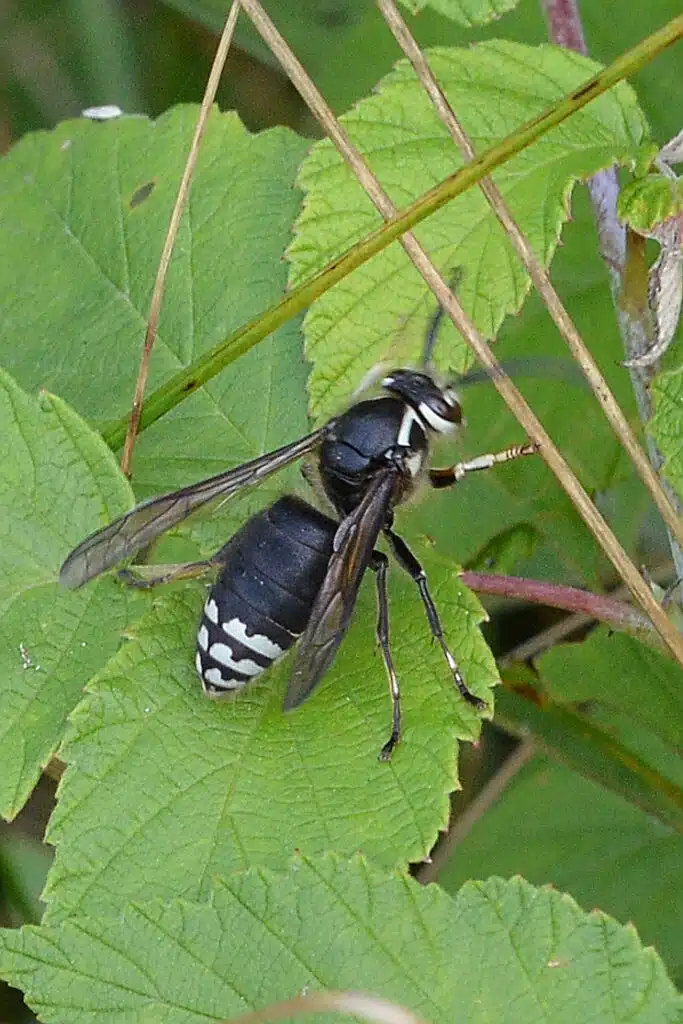
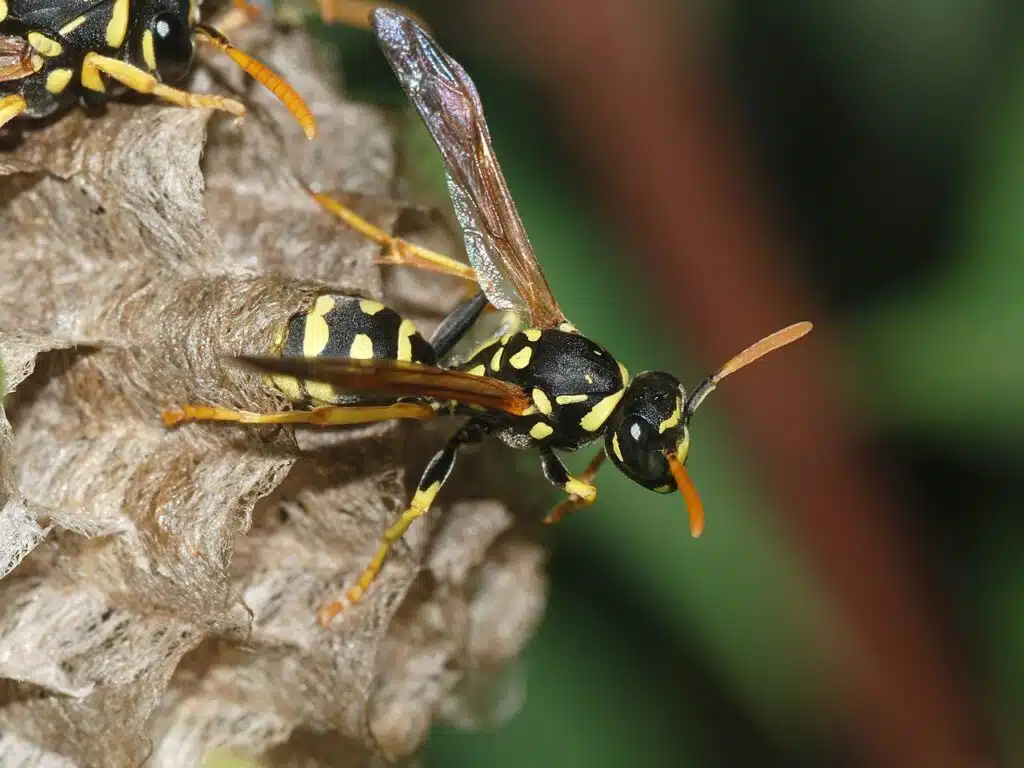
- Wasps have elongated bodies
Wasps tend to have an elongated body compared to bees. They are thinner and longer than typical honeybees. The elongated shape of the wasps helps separate it from other similar species.
- Wasps fly with their legs tucked or down
The positioning of the legs while flying can be different in wasps. However, bees only fly with their back legs down while wasps fly with all tucked legs or with all legs down.
Wasp Behavior And Habitat
Wasps can build nests or settle in holes and crevices they find across meadows, woodlands, gardens, parks, and even homes.
Wasps feed on pollen but they can also be predatory. They can kill all types of insects which are then fed to wasp larvae.
Bugs That Look Like Wasps
Here are some of the species most likely to be confused with wasps across North America.
1. Bees
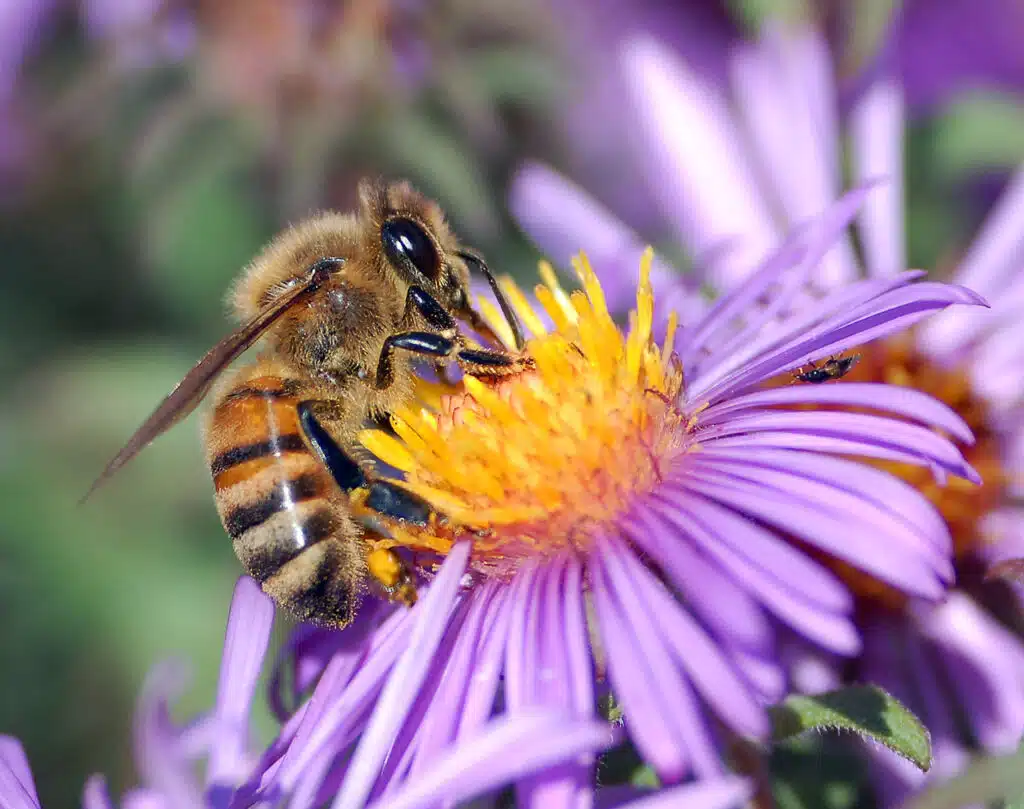
Bees are smaller and wider than most wasps. They bear similar black and yellow coloring but bees aren’t as aggressive.
One of the most important differences between bees and wasps is that bees rarely sting.
Bees are also known to live socially or on their own, just as wasps.
One of the differences between the nests of these insects is that the nest of bees survives for multiple years while wasps’ nests are vacated at the end of the season.
However, not all bees build their nest as there are a few kleptoparasitic bees that resemble wasps in behavior.
Cuckoo bees (named after cuckoo birds) invade the nests of other bees to lay eggs. The look of these bees resembles wasps the most.
A body without much hair on the abdomen (kleptoparasitic bees don’t collect pollen so they don’t need hair) and a thin sculpted waist make these bees resemble wasps.
Furthermore, some kleptoparasitic bees that invade the nests of other bee species can even take over the nest, mainly by killing the queen.
Field Cuckoo Bumblebees resemble wasps the most as they have an elongated body and black and yellow coloring.
The black wings of this bee species resemble the black wings of the Polka-Dot Wasp Moth, a type of wasp that mimics moths.
2. Wasp Beetles
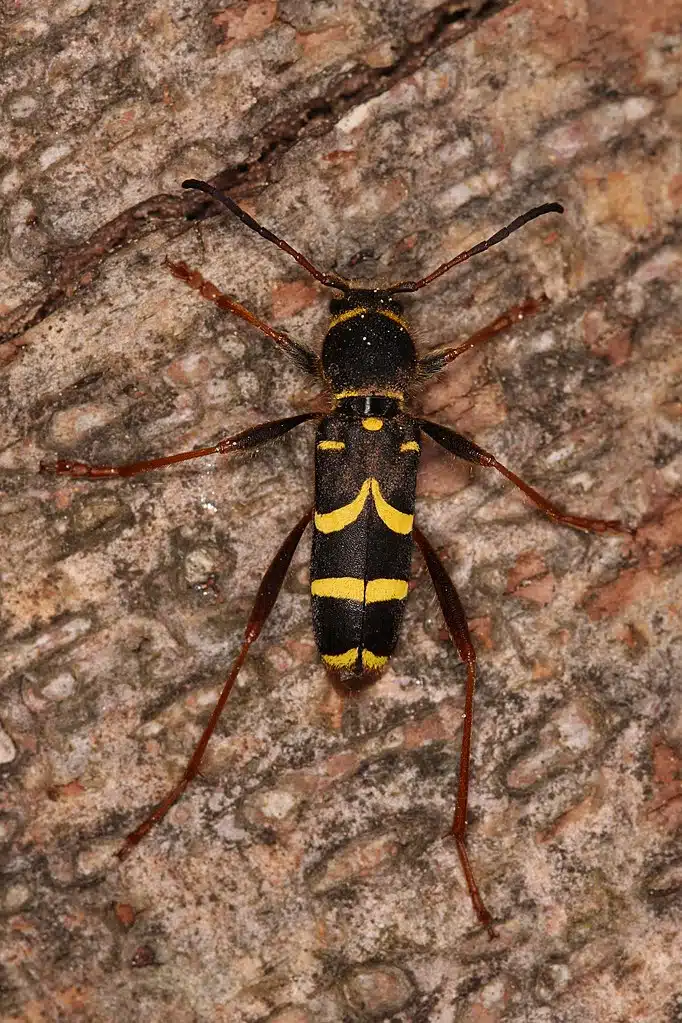
Wasp beetles (Clytus Arietis) are a species of wasp-mimicking beetles that look very similar to wasps.
One of the first ways to differentiate wasp beetles from actual wasps is by the size of the body. Wasp beetles grow to 18mm being slightly larger than many types of wasps.
Both species have black body with yellow bands across.
Wasp beetles can also fly like wasps.
You can find wasp beetles on various flowers where they feed on pollen and nectar.
Another method of telling the difference between wasps and wasp beetles is by seeing where the larvae of the species grow.
The larvae of wasps grow in many habitats such as nests or on the ground. The larvae of wasp beetles are mostly found in dead wood.
3. Hoverflies
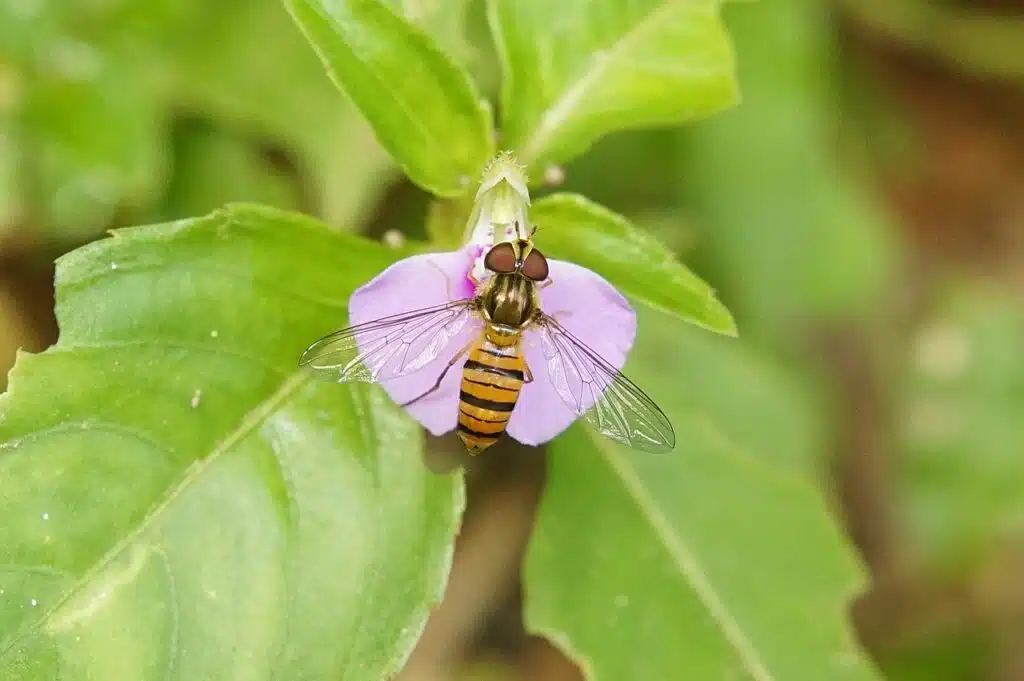
Hoverflies are some of the most common species of pollen-feeding insects in North America.
These types of insects have black and yellow body with transparent wings which are never colored like the wings of wasps.
Unlike wasps, hoverflies can be seen as widely beneficial insects and important pollinators of flowers. They also pollinate crops as this is where they can find some of their favorite foods.
As wasps larvae, hoverfly larvae can eat insects.
Adult hoverflies feed aphids to their larvae which means they are beneficial to crops.
Hoverflies don’t sting but they aren’t completely non-threatening to humans. They can cause myiasis in humans that accidentally eat hoverfly larvae.
4. Moths
Moths are sometimes known to use mimicry tactics either to avoid predation or to reach a certain type of plant for food.
There are multiple species of moths that either resemble or even mimic moths.
- Polka-Dot Wasp Moth
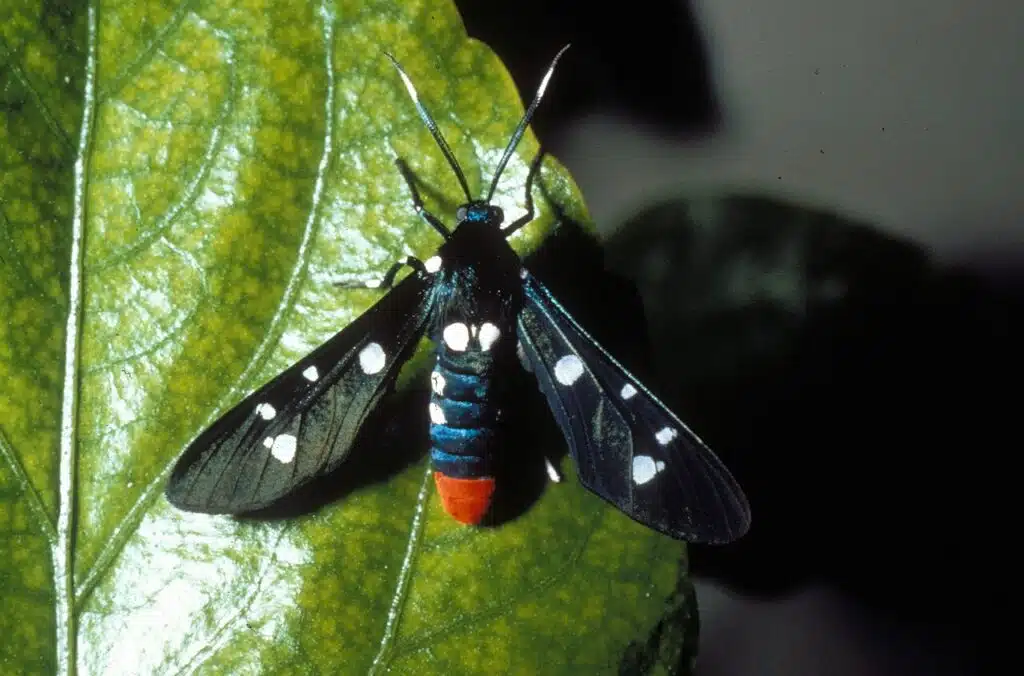
Polka-Dot Wasp Moths (Syntomeida epilais) have elongated black and red bodies and black wings. Considerably larger than wasps, these moths are native to tropical areas alone.
One of the reasons these moths mimic wasps is so that they can get to oleander plants without the risk of being predated. They even have white polka dots on the wings to make them look toxic.
- Scarlet-bodied Wasp Moth
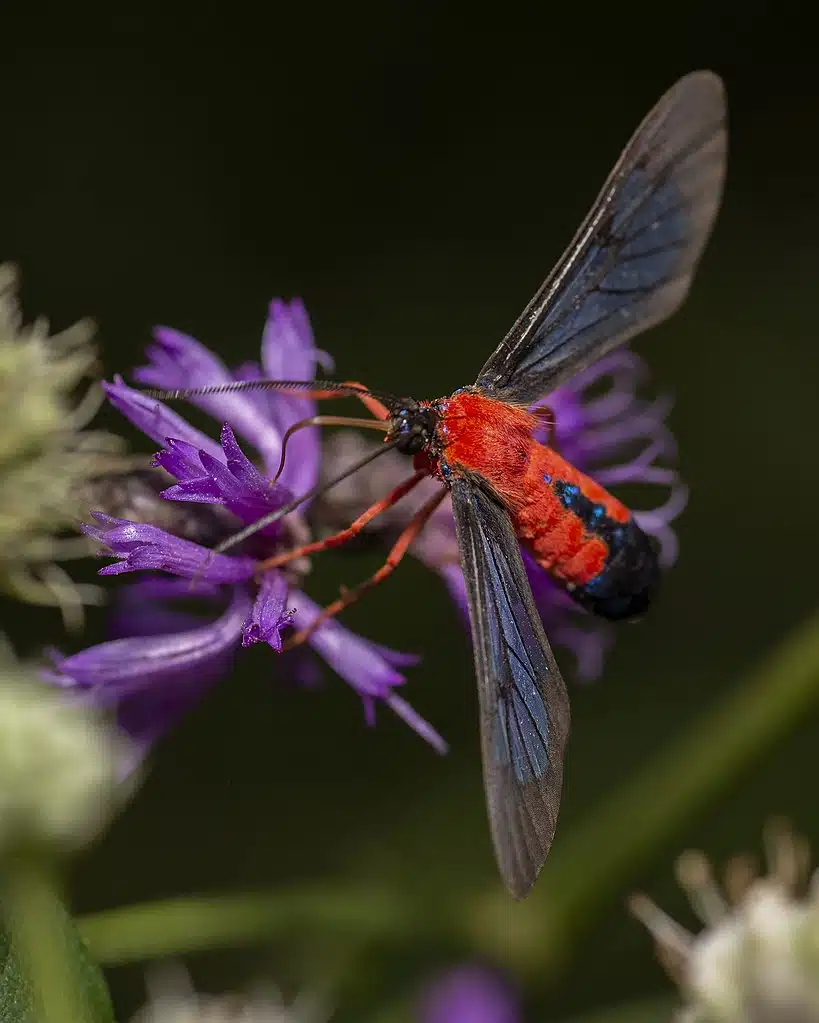
These types of moths are native to Florida and the Southeast. They use mimicry techniques to look similar to wasps.
With a red and black body, Scarlet-bodied Wasp Moths (Cosmosoma myrodora) use mimicry tactics to avoid predation. They feed on dog fennel as adults and Florida Keys hempvine as larvae.
- Texas Wasp Moth
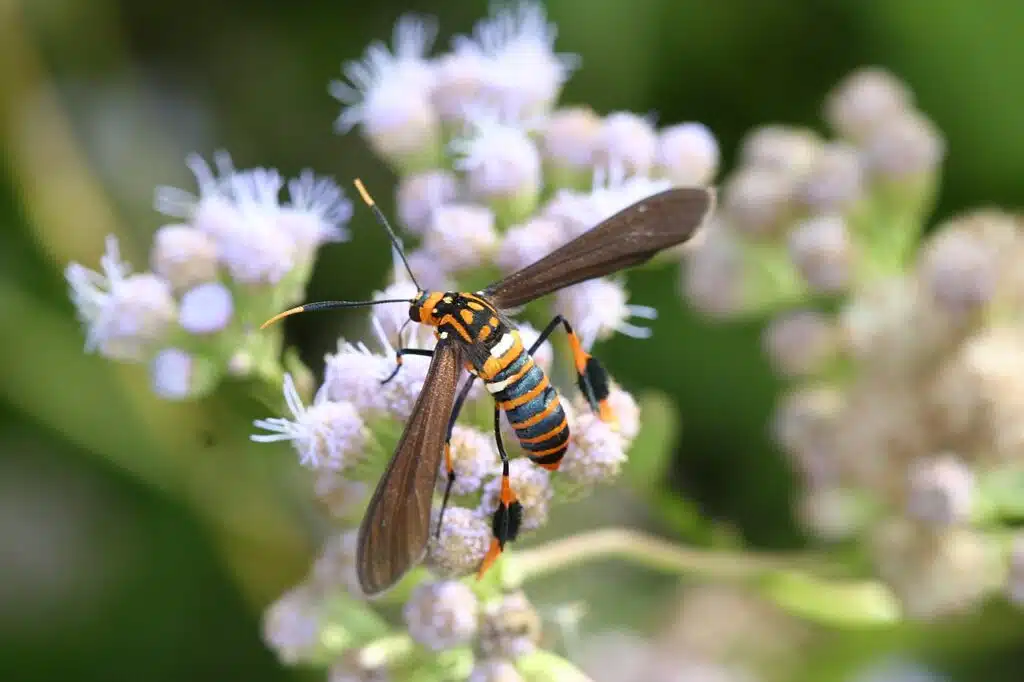
Texas Wasp Moths (Horama panthalon) directly mimic paper wasps. Yellow, brown, and black colors are visible on both of these types of insects.
The wings are one of the most important physical differences between the species. Texas Wasp Moths have wider and longer black wings.
- Black-banded Wasp Moth
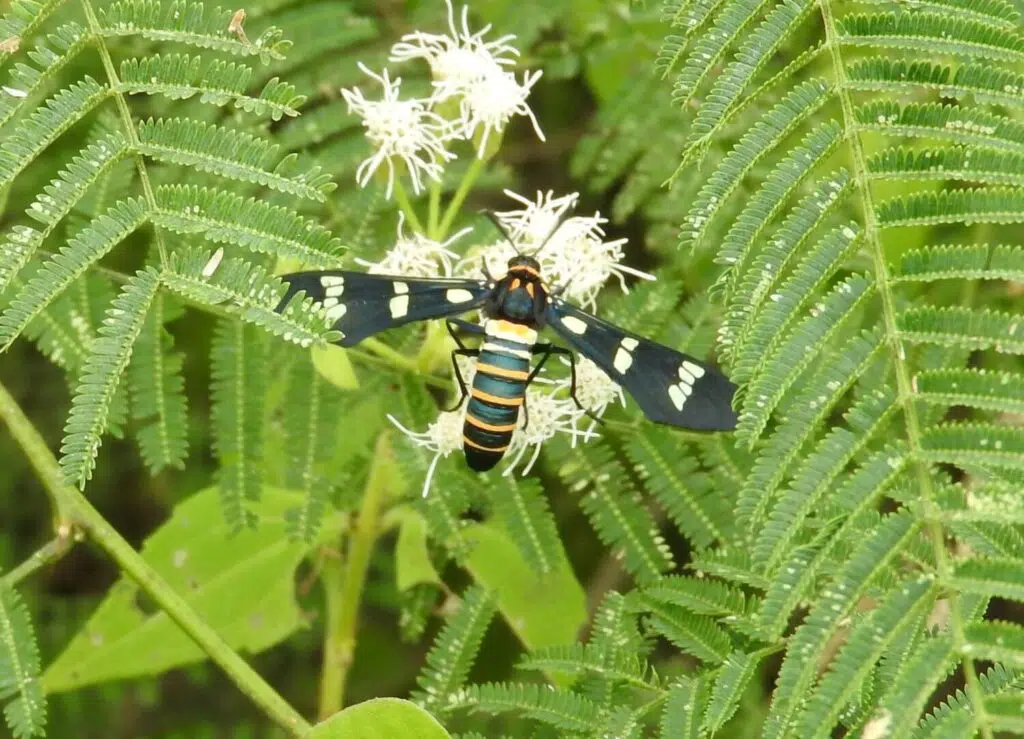
Black-banded Wasp moths (Syntomeida melanthus) have a base black color with bright yellow bands across the body. This species has black wings with yellow spots.
One of the easiest ways to tell the difference between wasps and the Black-banded Wasp moth is by the flowers you see the insect on. Black-banded Wasp moth uses morning glory as a host plant.
- Raspberry Crown Borer
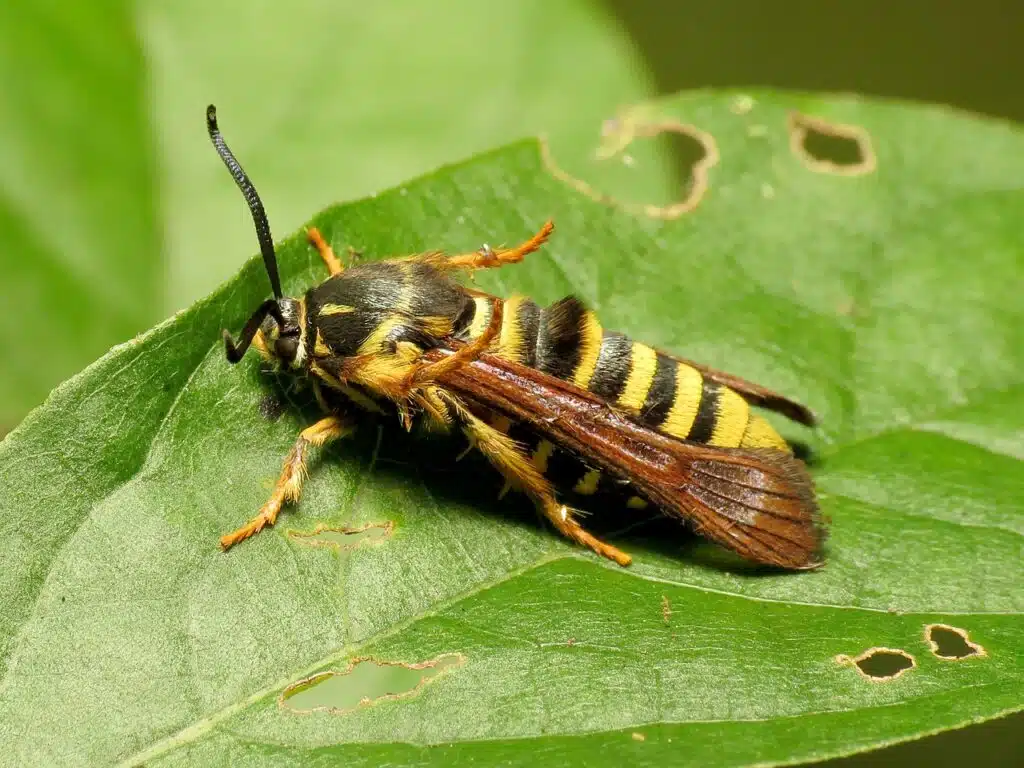
Raspberry Crown Borers (Pennisetia marginata) have black and white body with brown wings. This species mimics yellow jacket wasps.
You can identify a Raspberry Crown Borer by its host plant. This moth is a pest of cane.
5. Spiders
Spiders in North America are found in thousands of species. These are some of the least likely arachnids to mimic wasps.
However, there are a few spiders that have the same colors as wasps.
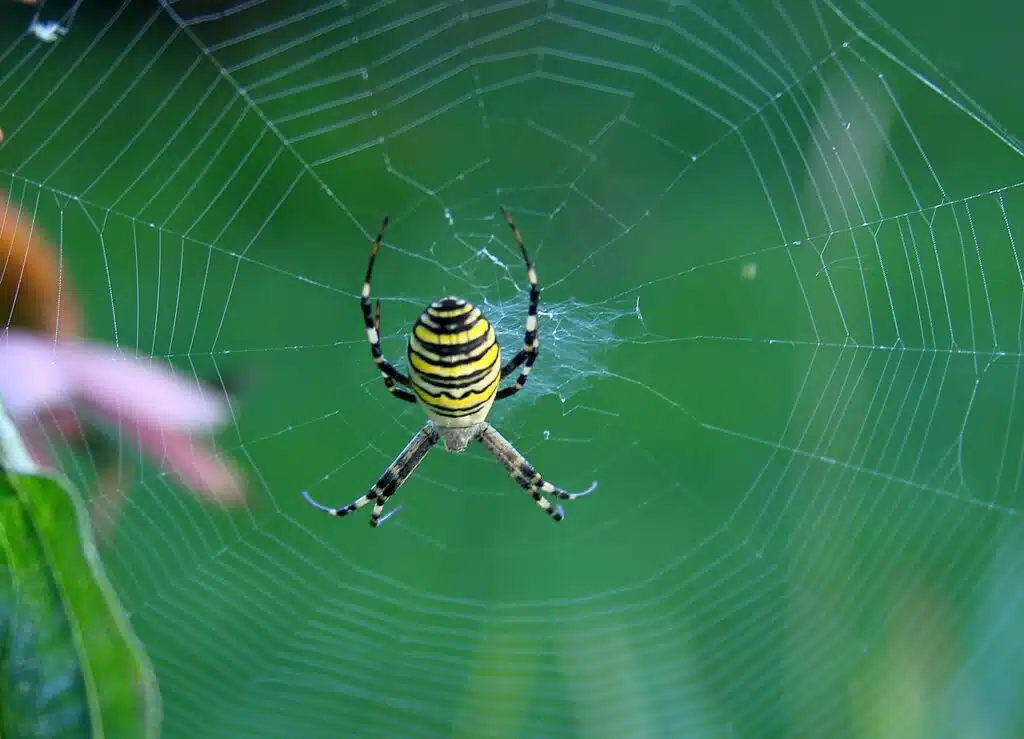
Wasp spiders (Argiope bruennichi) are species of orb weavers that have black and yellow coloring. The abdomen of wasp spiders has alternating black and yellow bands.
Even the legs of the wasp spider are also black and yellow. This spider is common in gardens where it builds a like spider web, unlike wasps.
6. Wasp Katydids
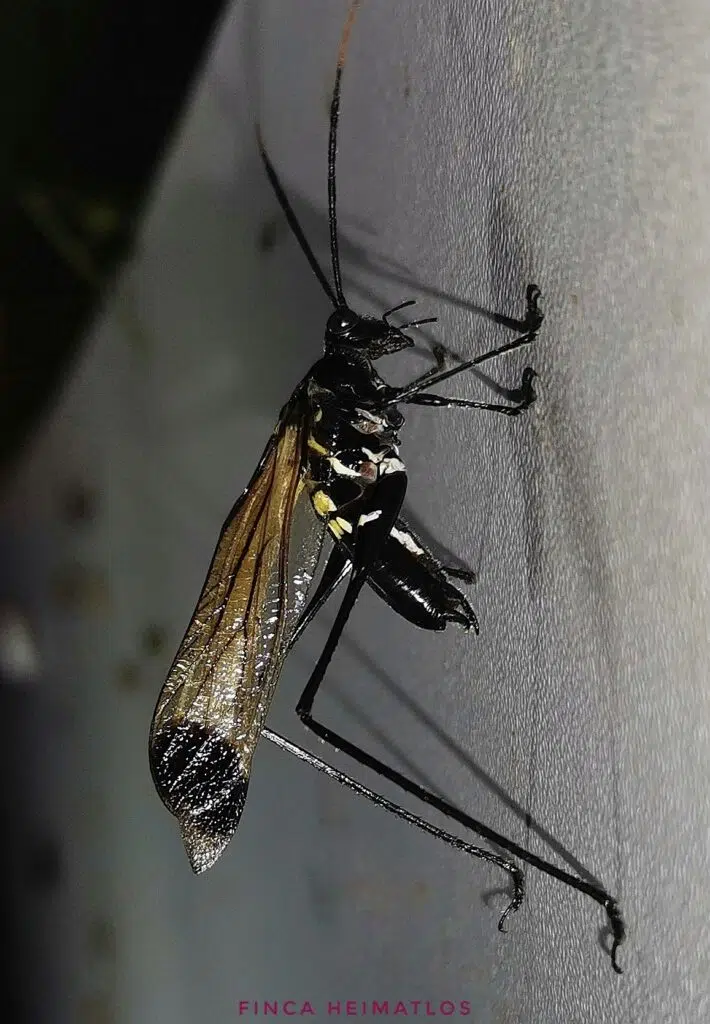
Wasp Katydids (genus Aganacris) have a black base color which can be matte or with a metallic-blue hue.
The wings of the species are either yellow or orange. This genus is only found in neotropical climates.
Wasps Katydids have different colors from wasps and they are known for female-only populations in most habitats.
7. Horntails
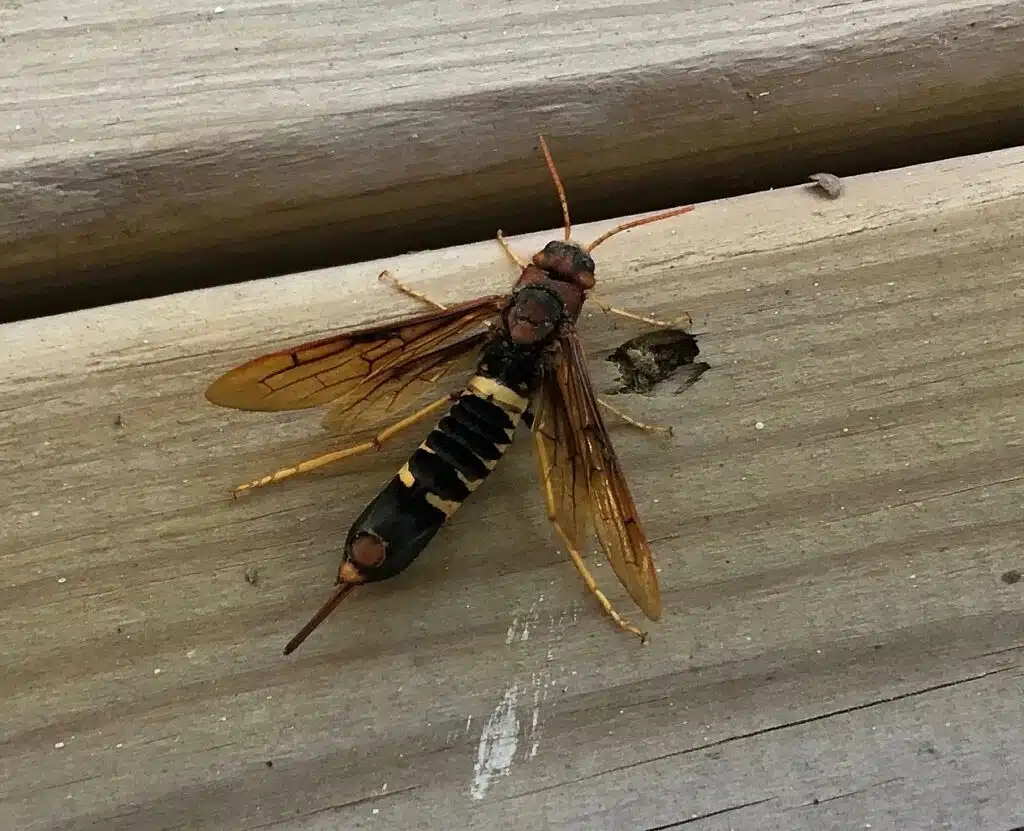
Horntails have a similar elongated body to wasps. They can be longer in some cases as horntails grow to 1.6 inches.
Horntails also have base black and yellow coloring but they also have red sections across the body. Female horntails lay eggs in wood, unlike many wasps.
Lifespan is another key difference between wasps and horntails. Most horntails live at least 2 years while most wasps only live a few weeks.
8. Sawflies
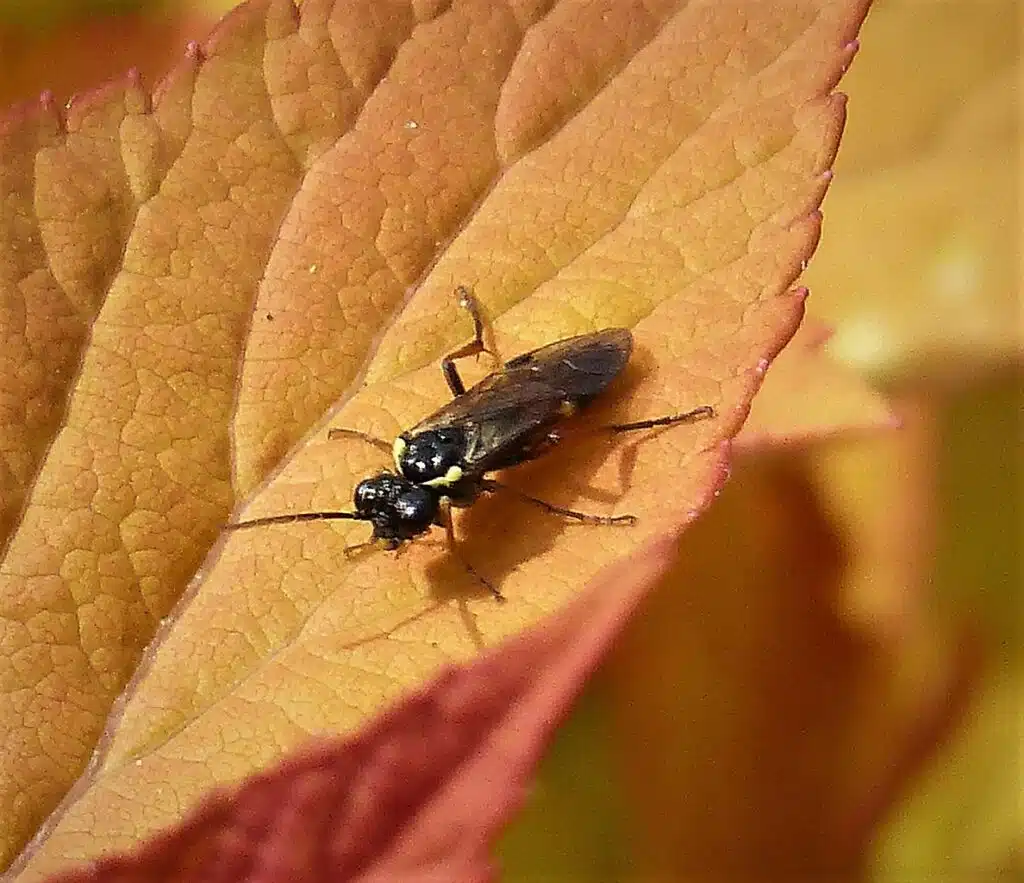
Sawflies are insects of the Hymenoptera genus. This is a group that includes wasps and bees. Being of the same group, many confuse the insects with either wasps or bees.
The biggest visual difference between wasps and sawflies is the waist or the mid-section of the species. Wasps have a thin waist while sawflies have a broad waist.
Sawflies don’t sting even if they can sometimes be mistakenly taken as stinging insects. A long ovipositor is specific to sawflies which makes some people believe it’s a stinger.
9. Scorpionflies
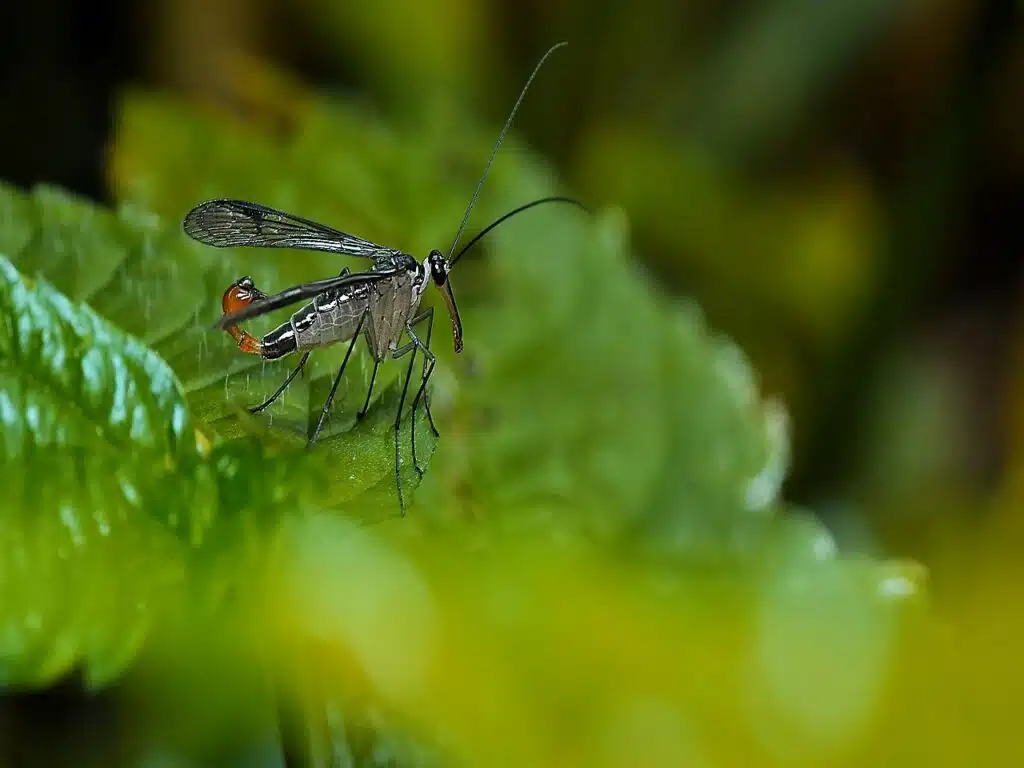
Scorpionflies are sometimes taken for wasps and other times for scorpions. They can raise the end of the abdomen and look similar to scorpions.
These insects can also be taken for wasps as they have yellow and black wings and orange bodies. Some scorpionflies commonly confused with wasps have black bodies with yellow bands.
You can analyze what scorpionflies eat if you aren’t sure about their identity since they have different food preferences than wasps.
Scorpionflies eat all types of vegetation. Wasps don’t eat vegetation.
Some scorpionflies even eat decaying vegetation which makes them considerably different from wasps in habits even if they can share the same Neotropic habitat.
Summary
Wasps are sometimes seen as fearless predators with a painful sting. This makes some species take on their physical appearances, mostly in the form of coloring.
Moths can be among the species that mostly resemble wasps by mimicry while other species of insects resemble wasps naturally.